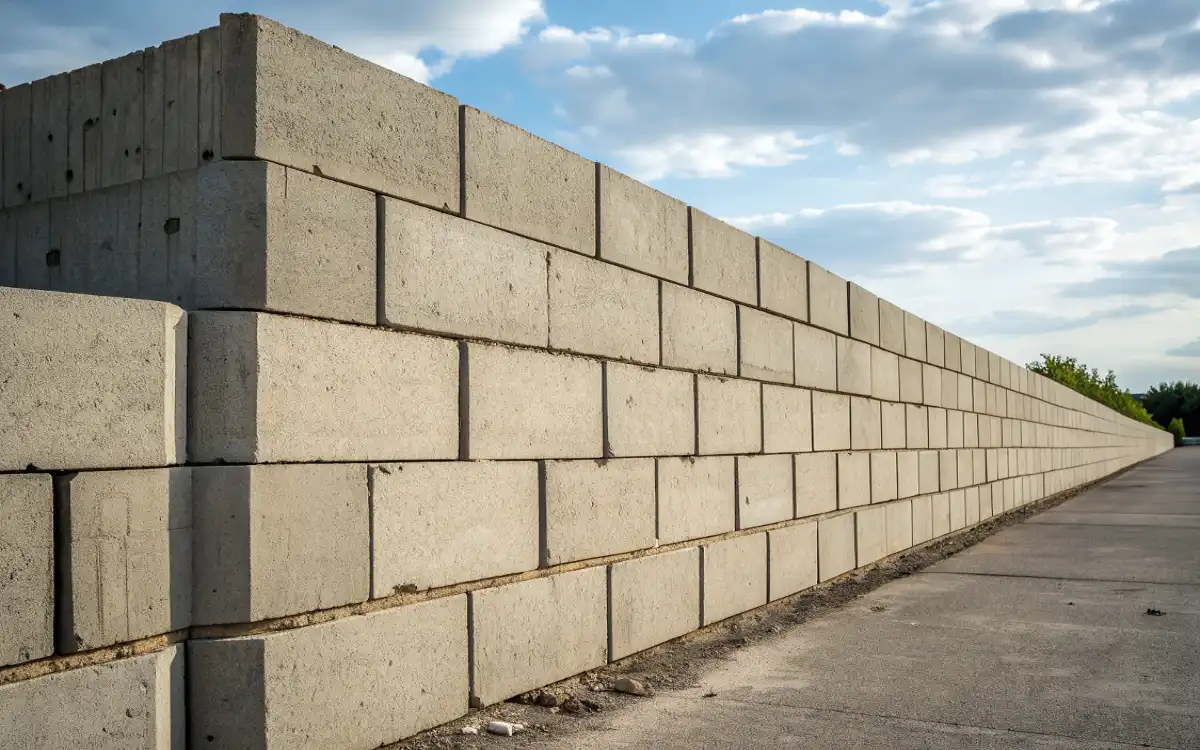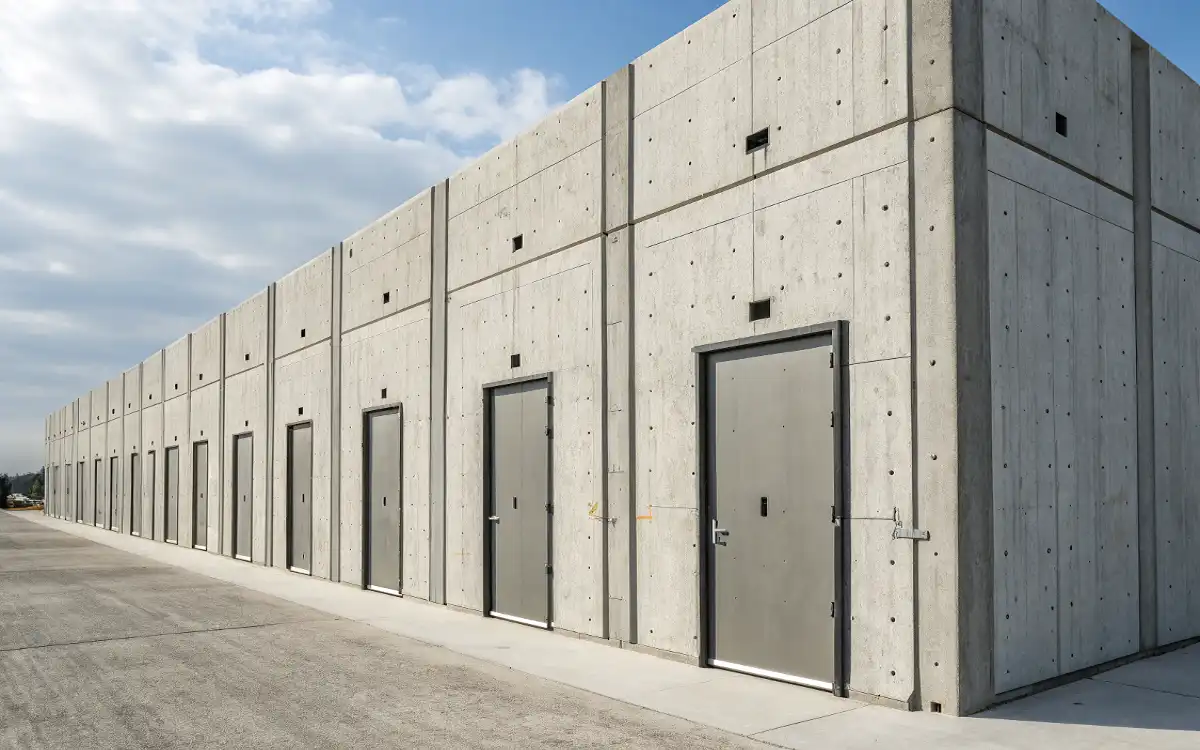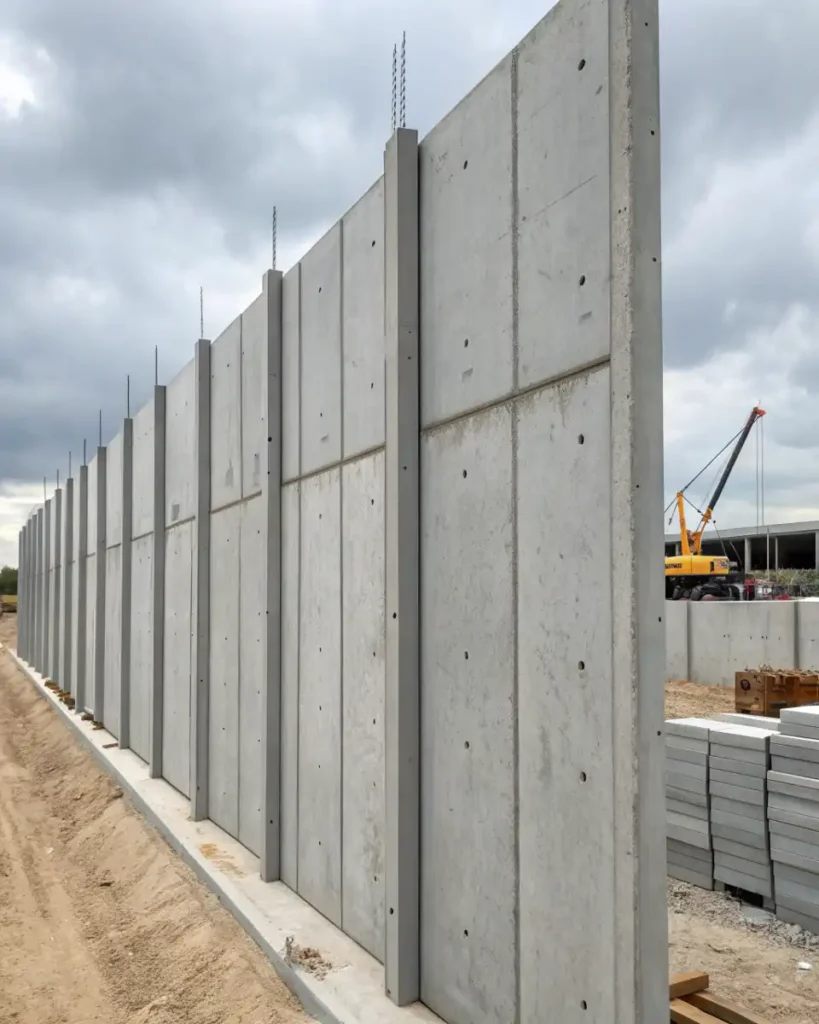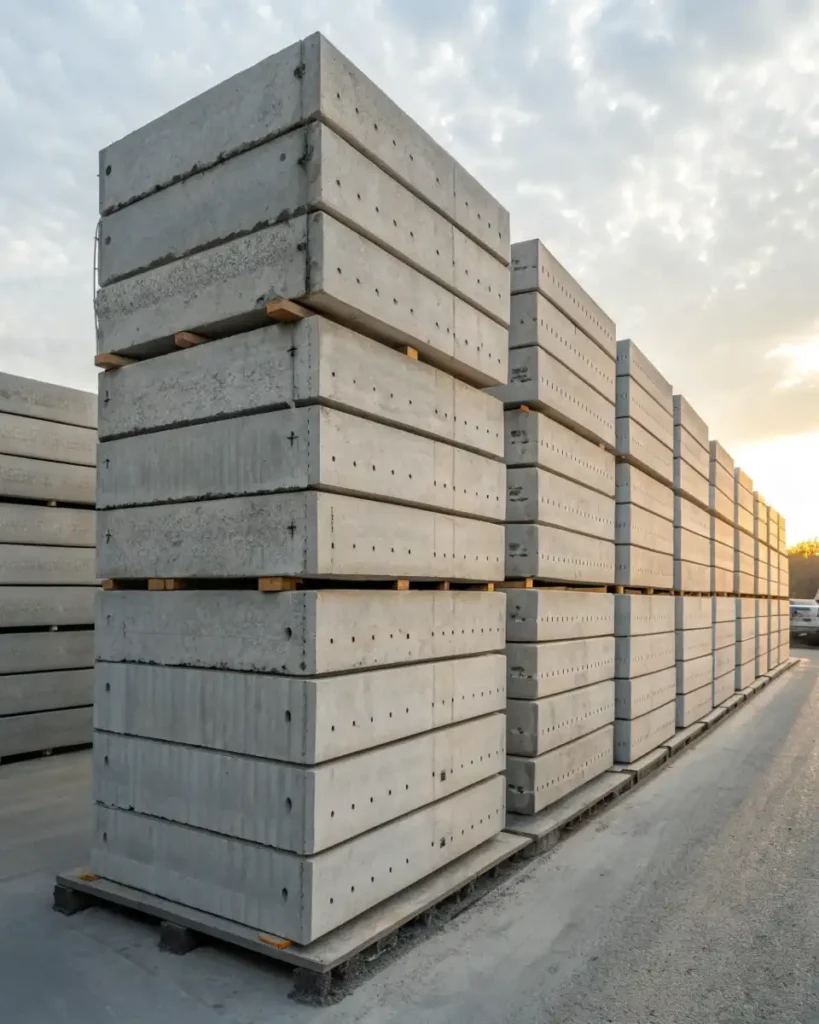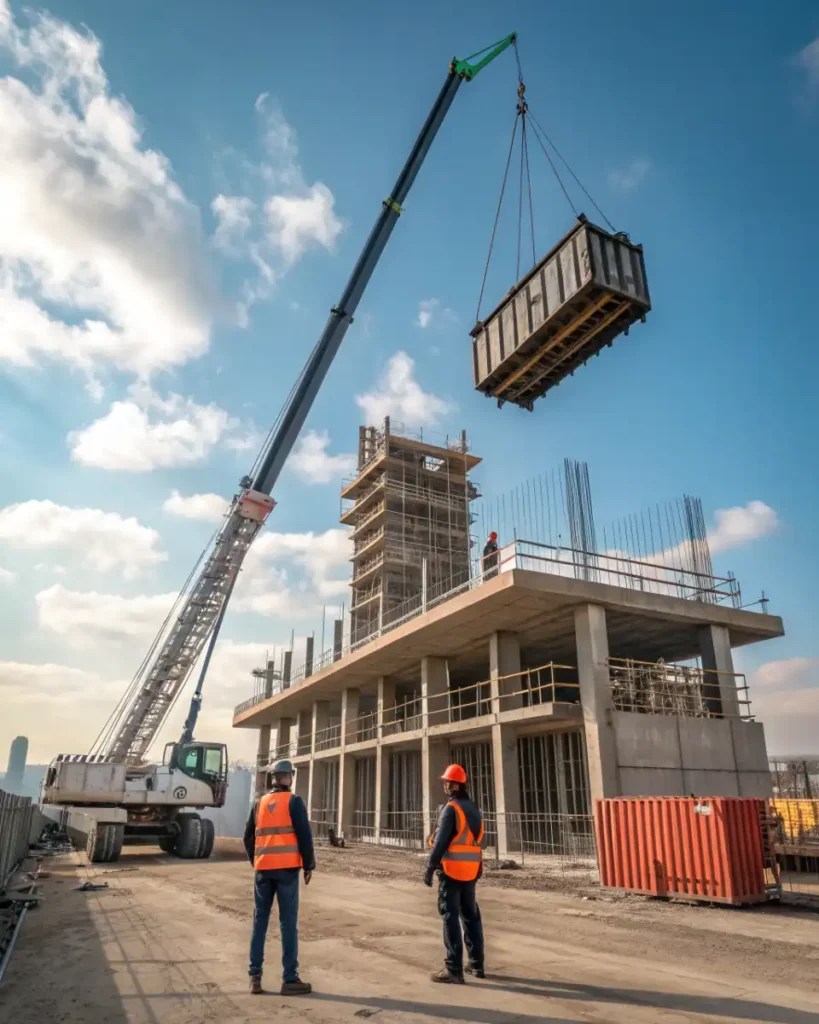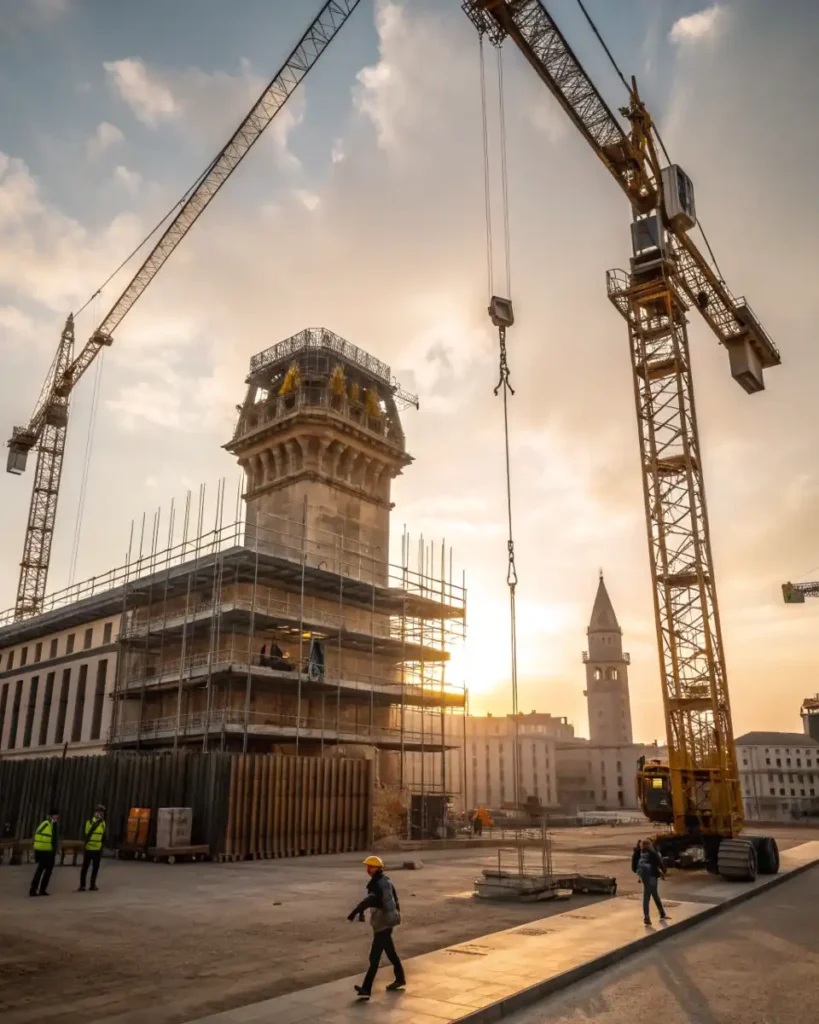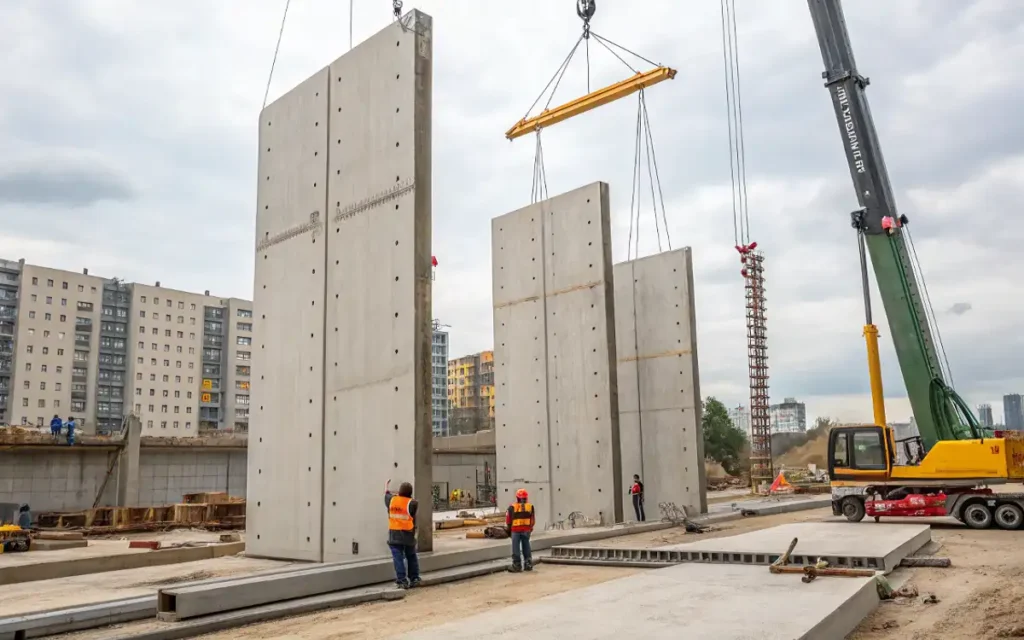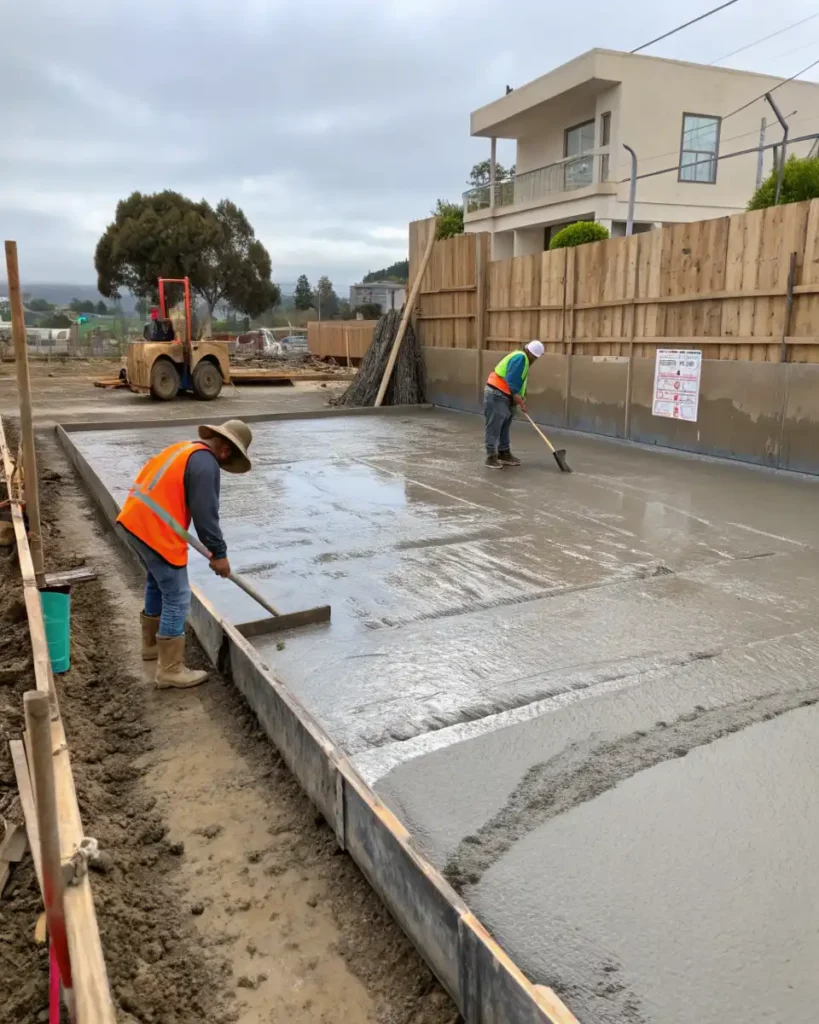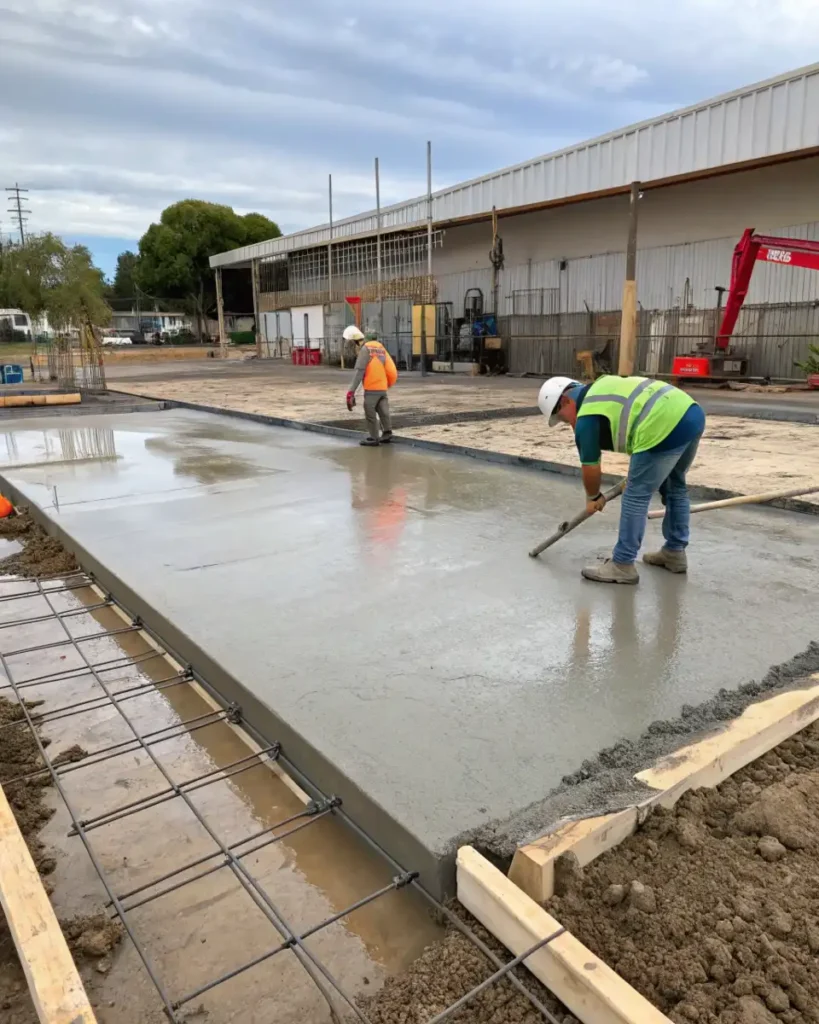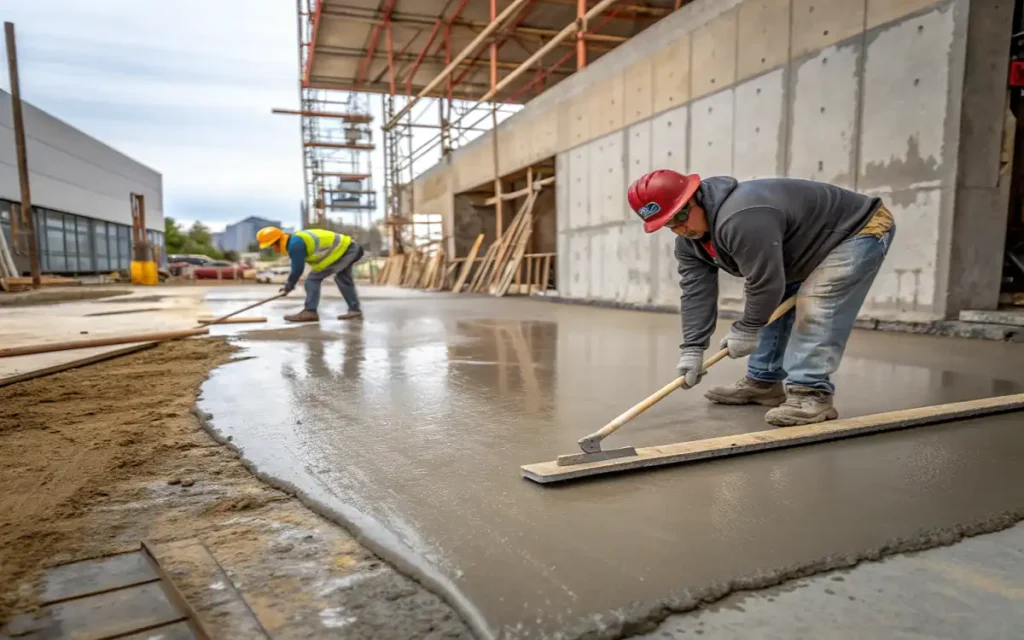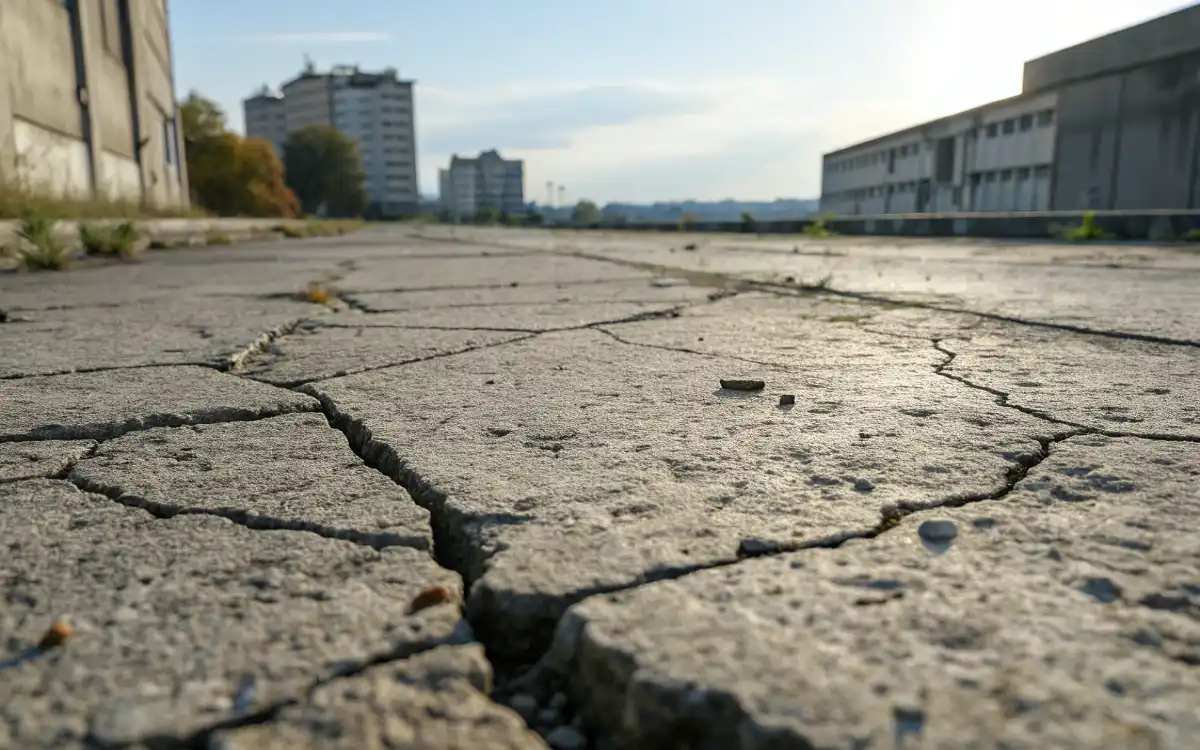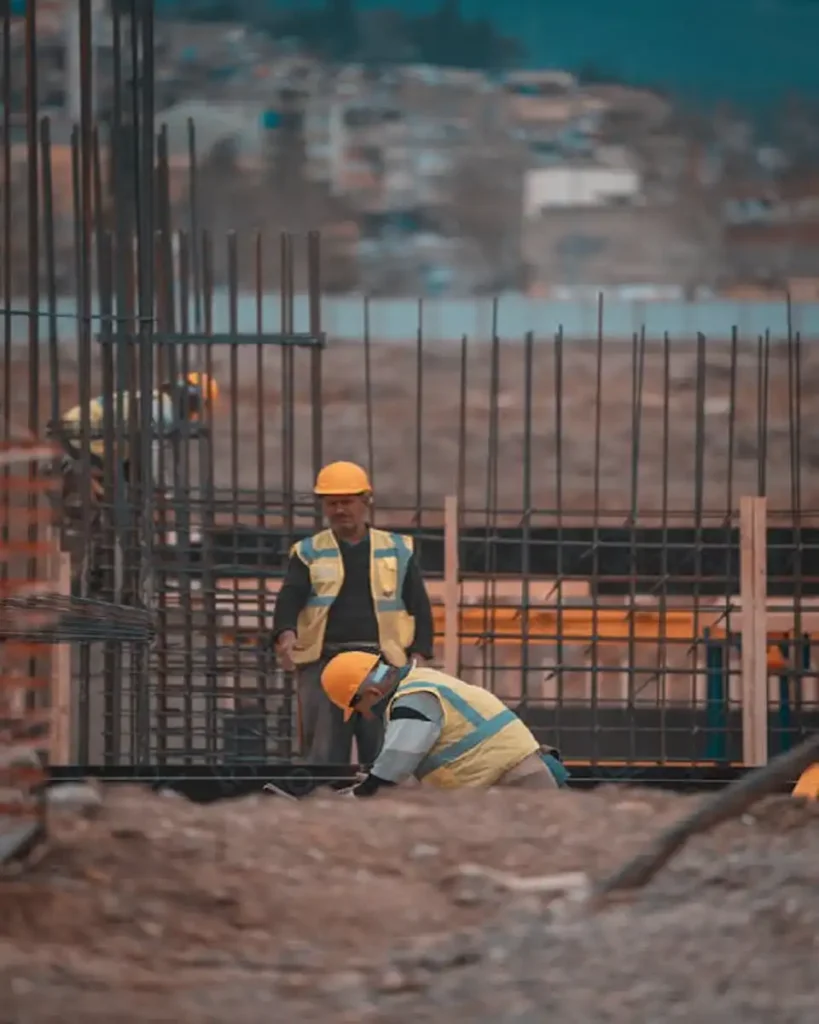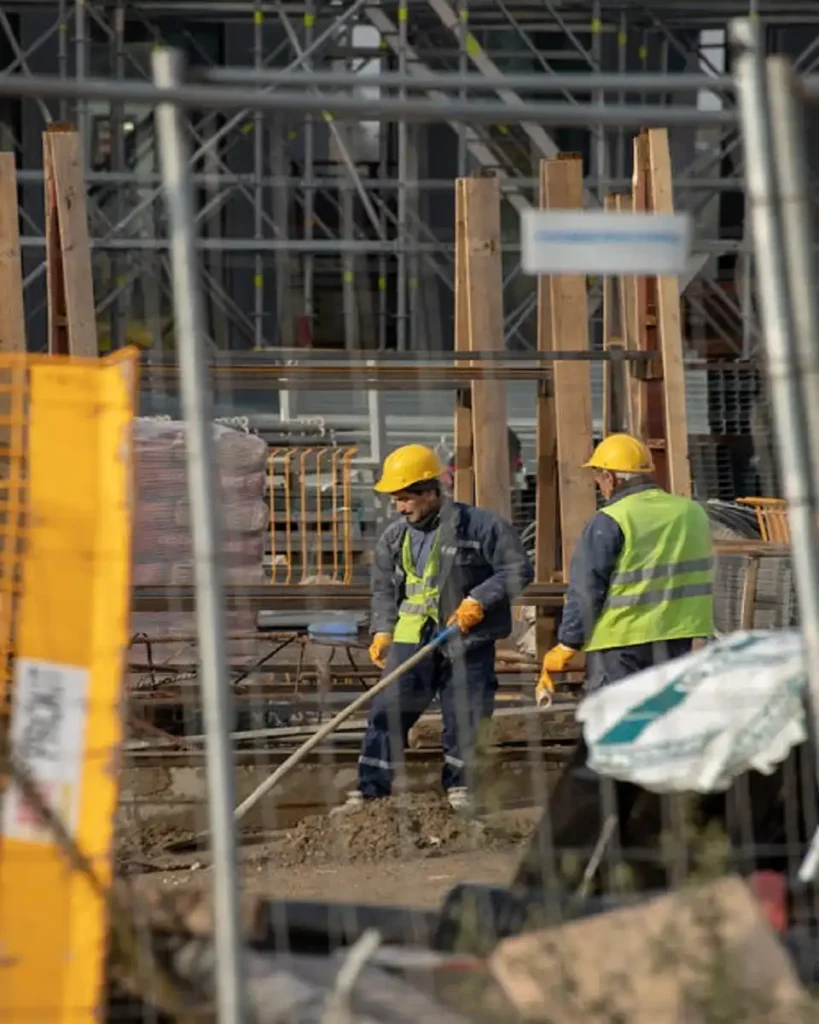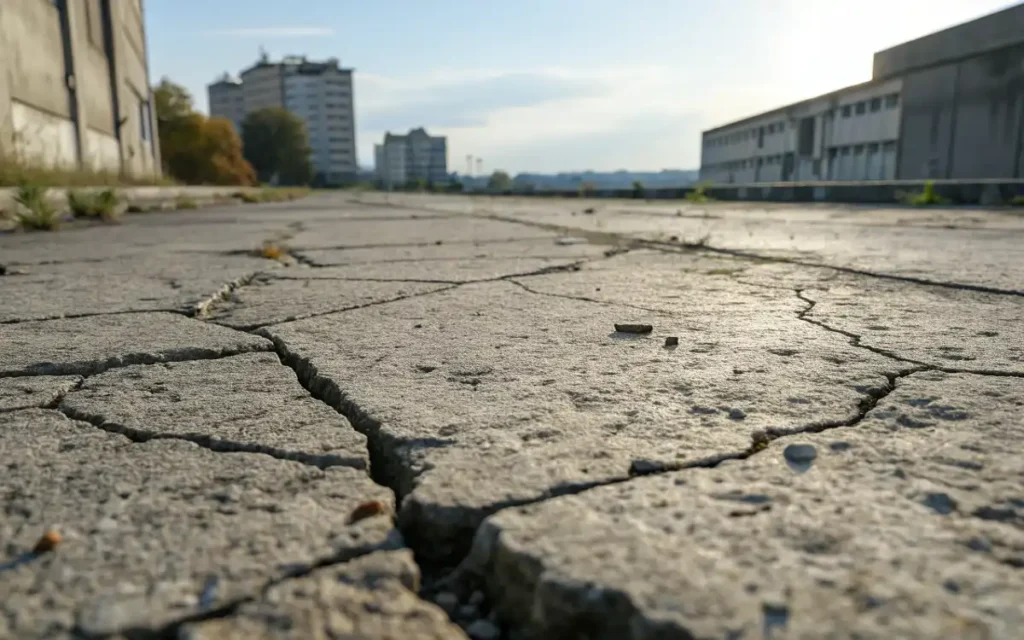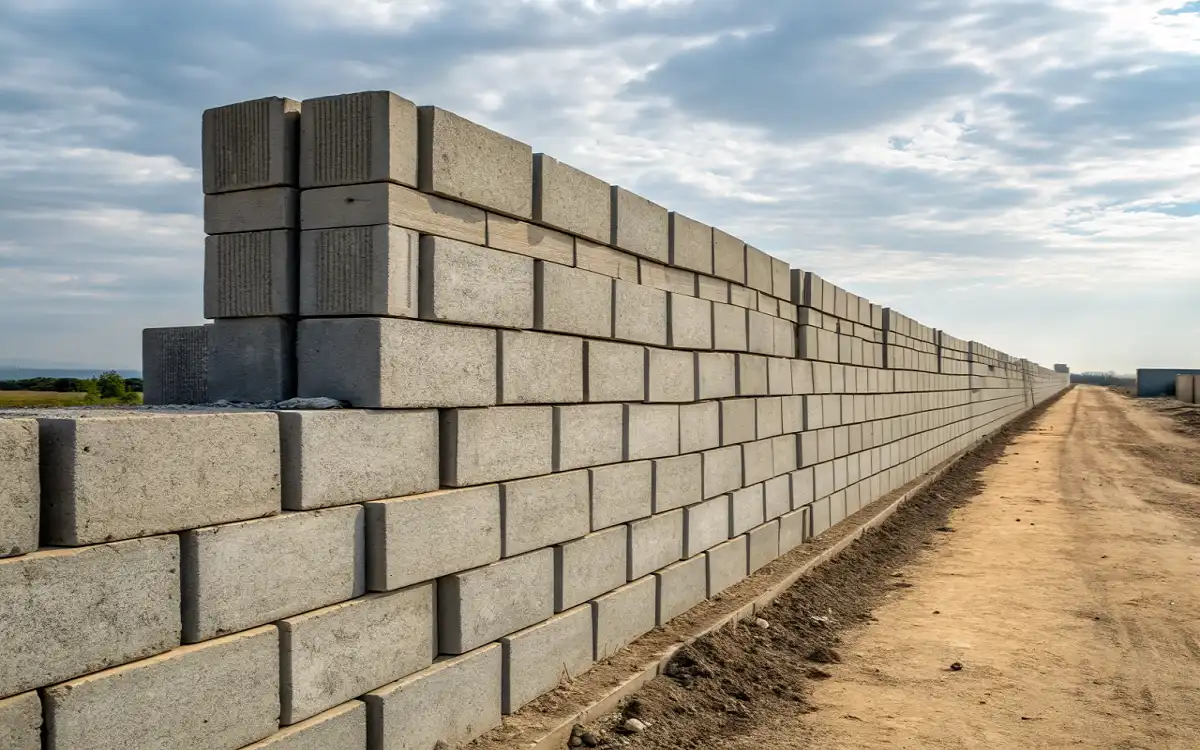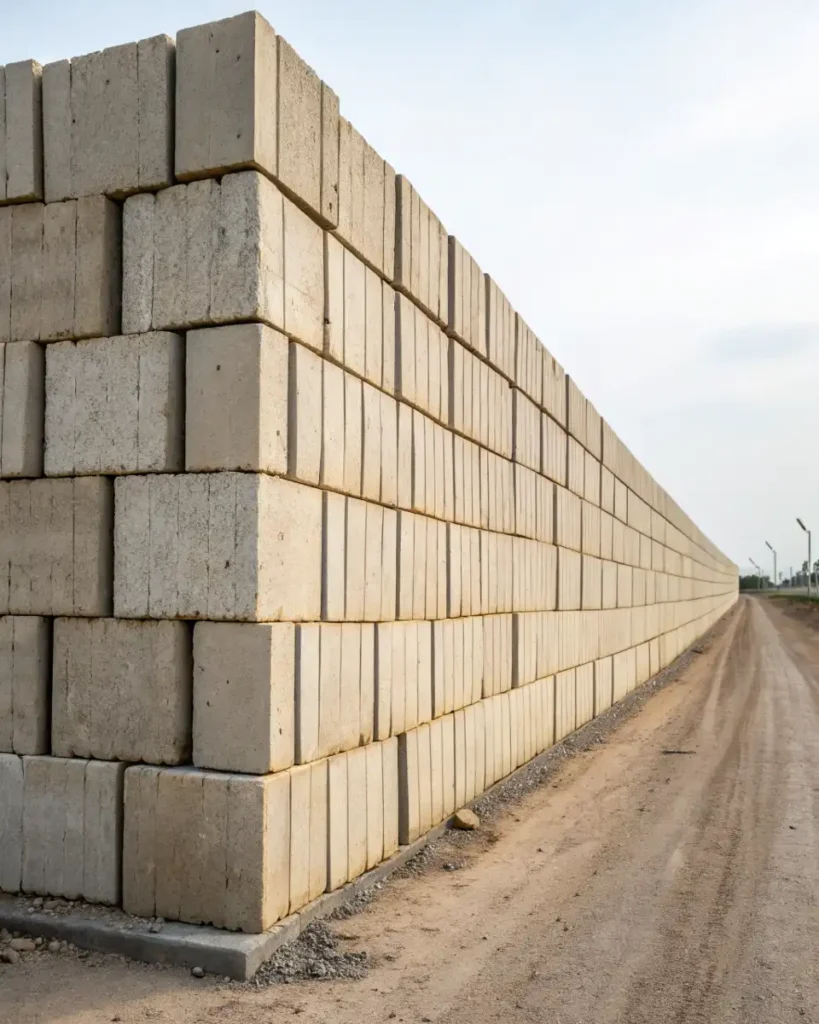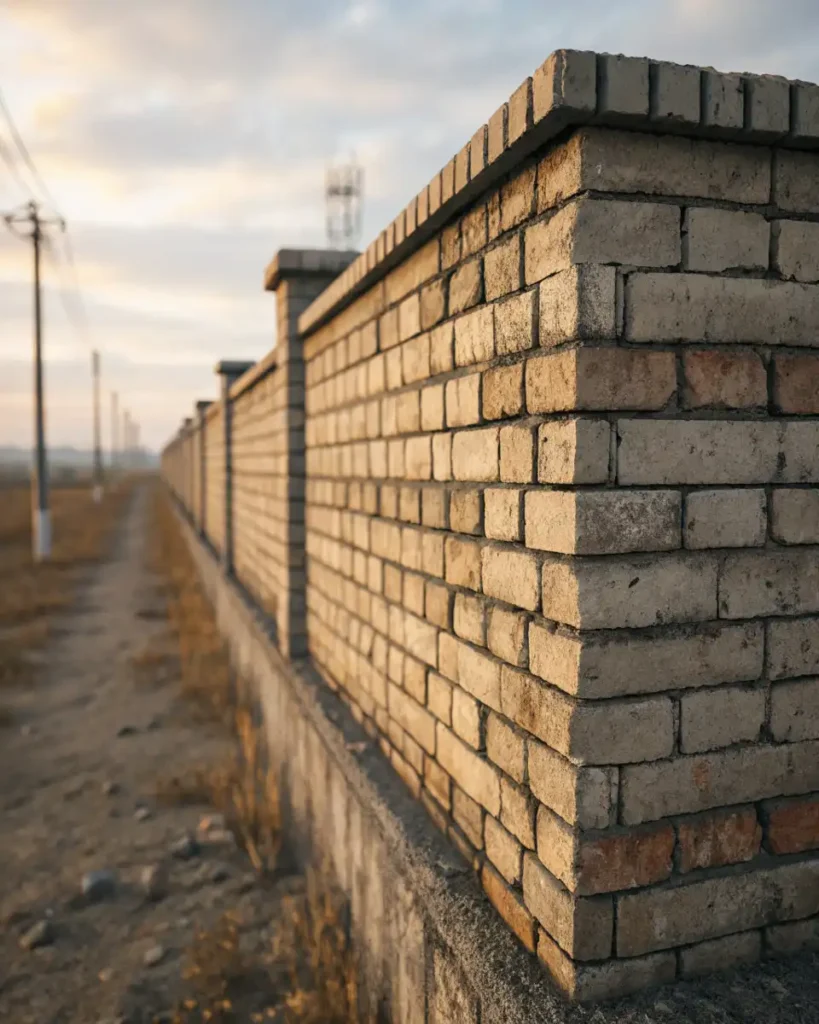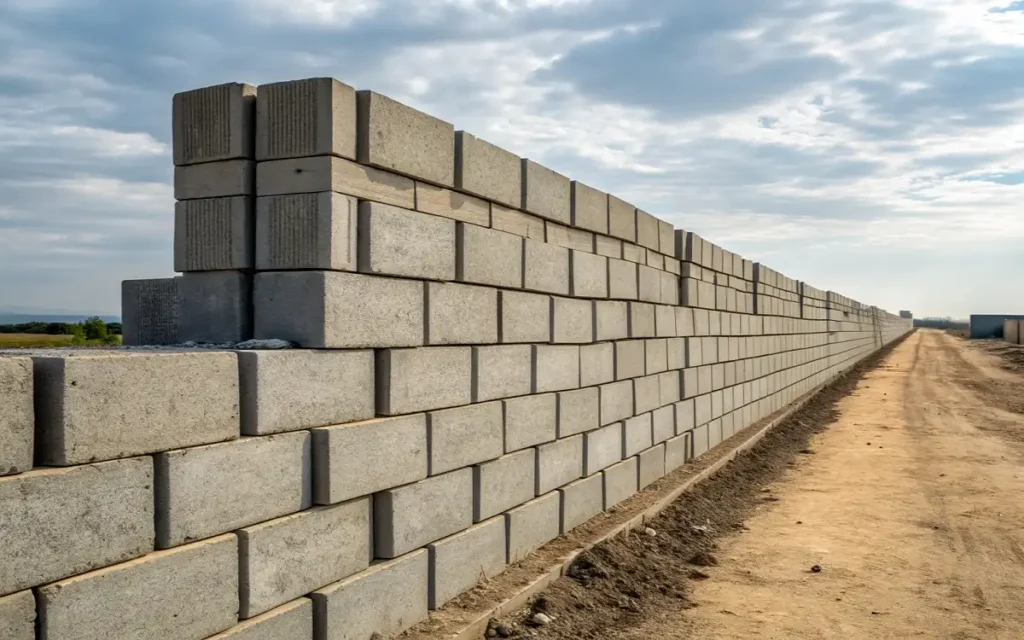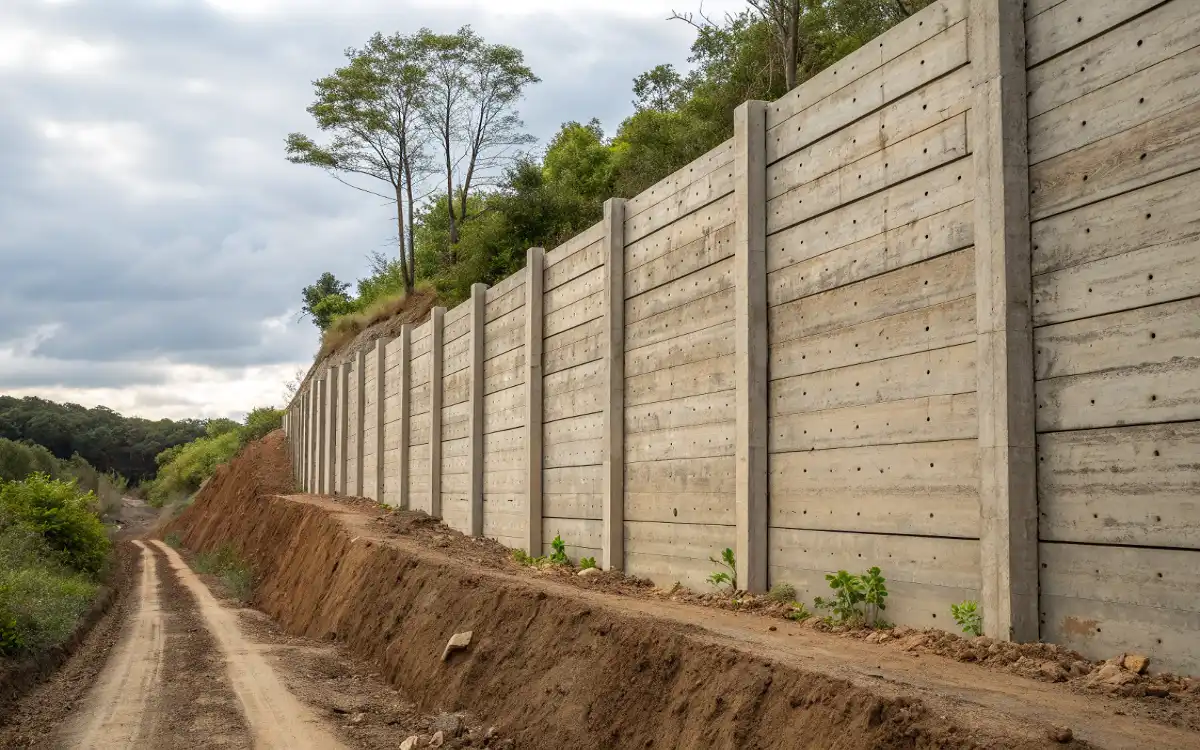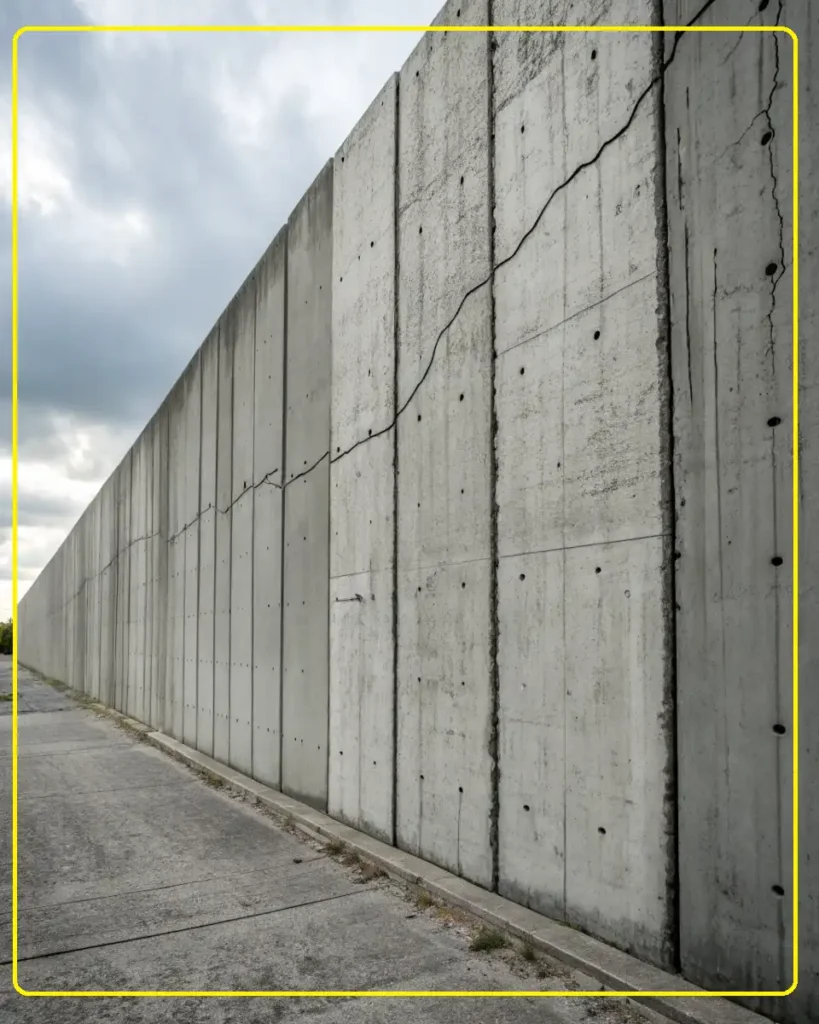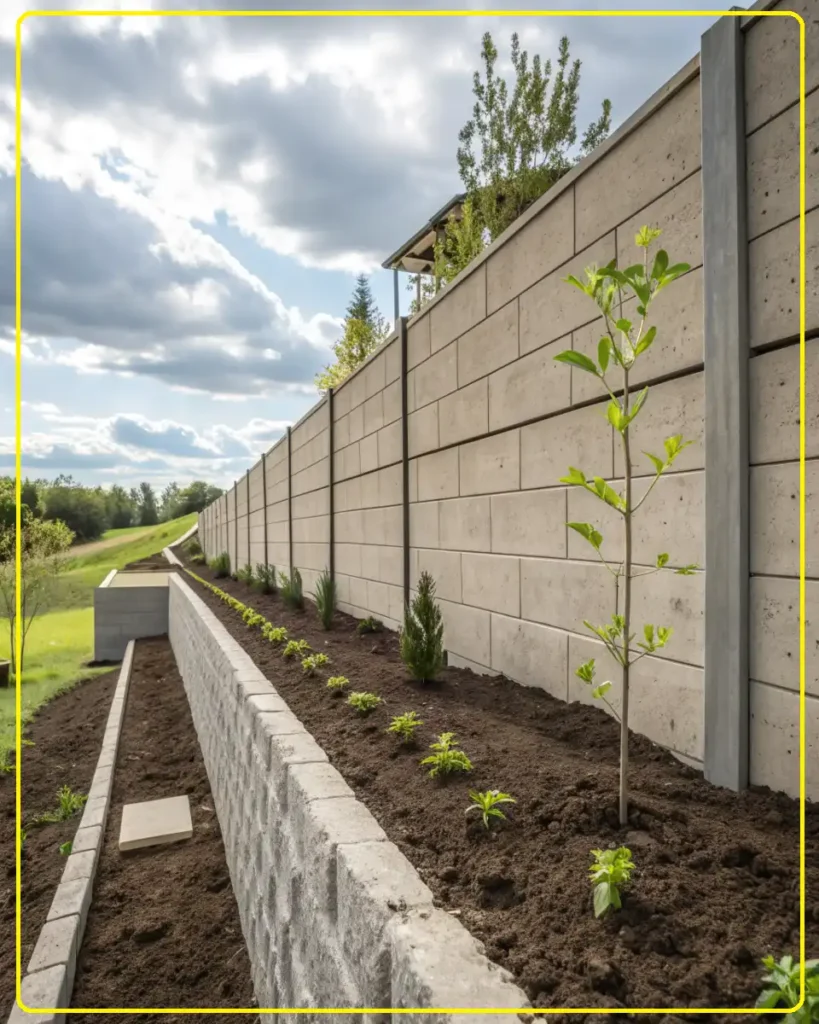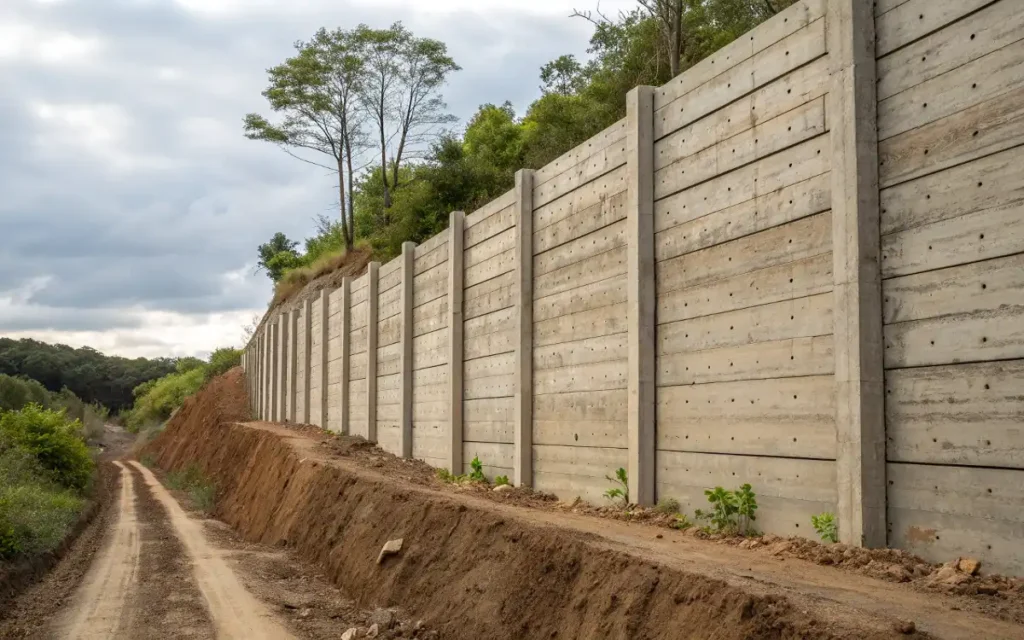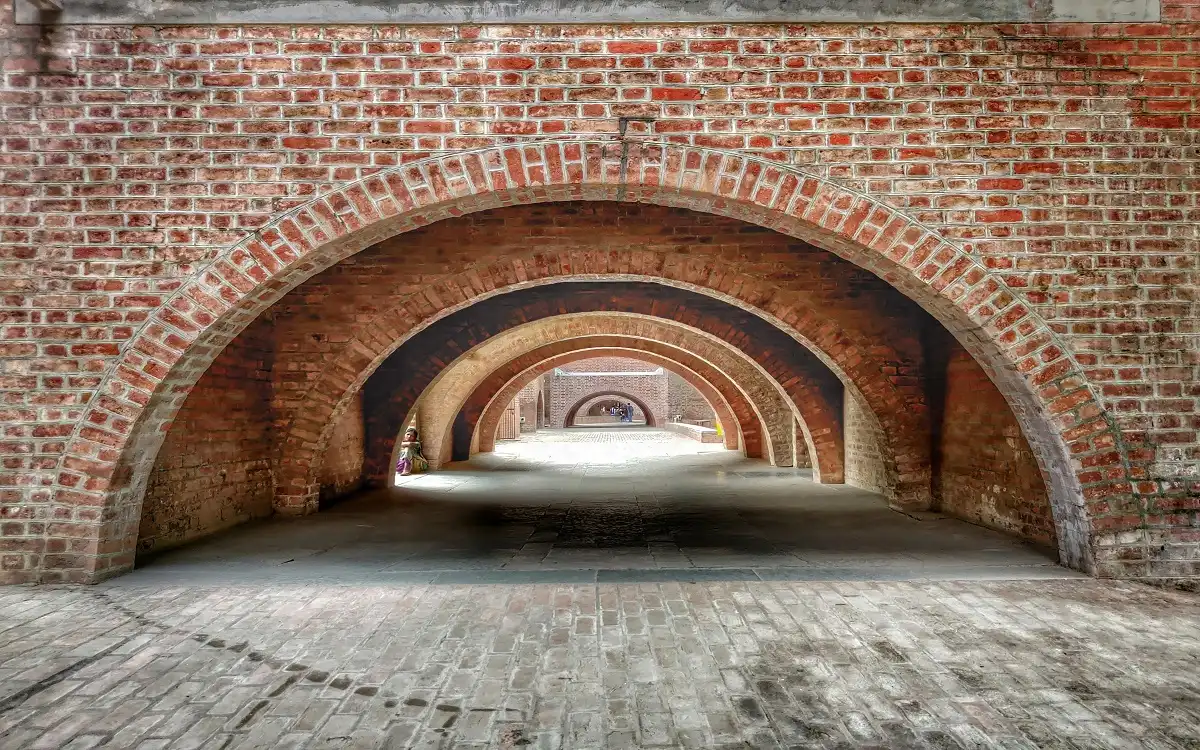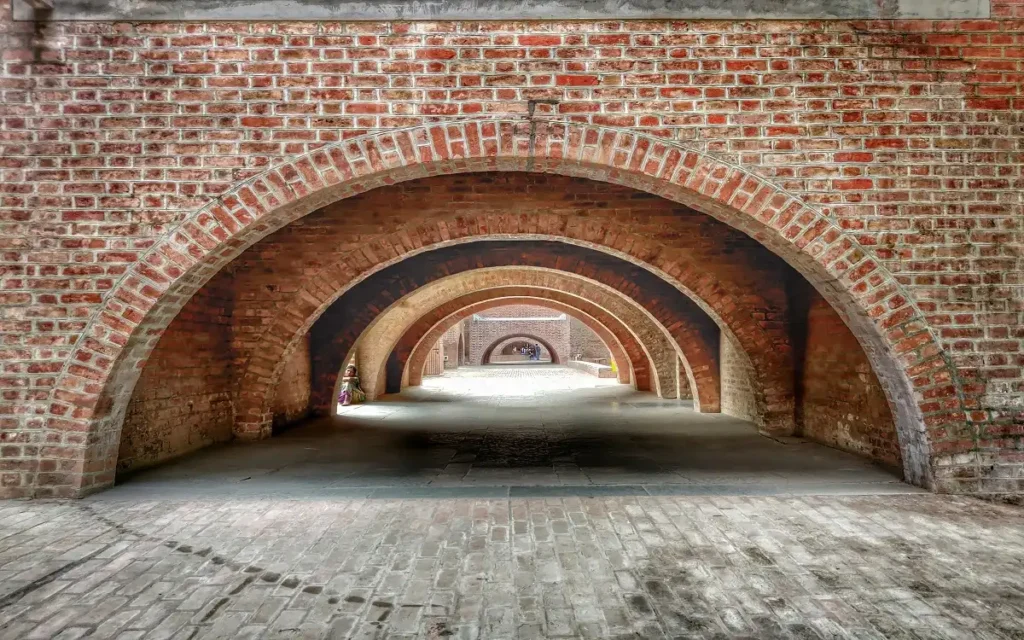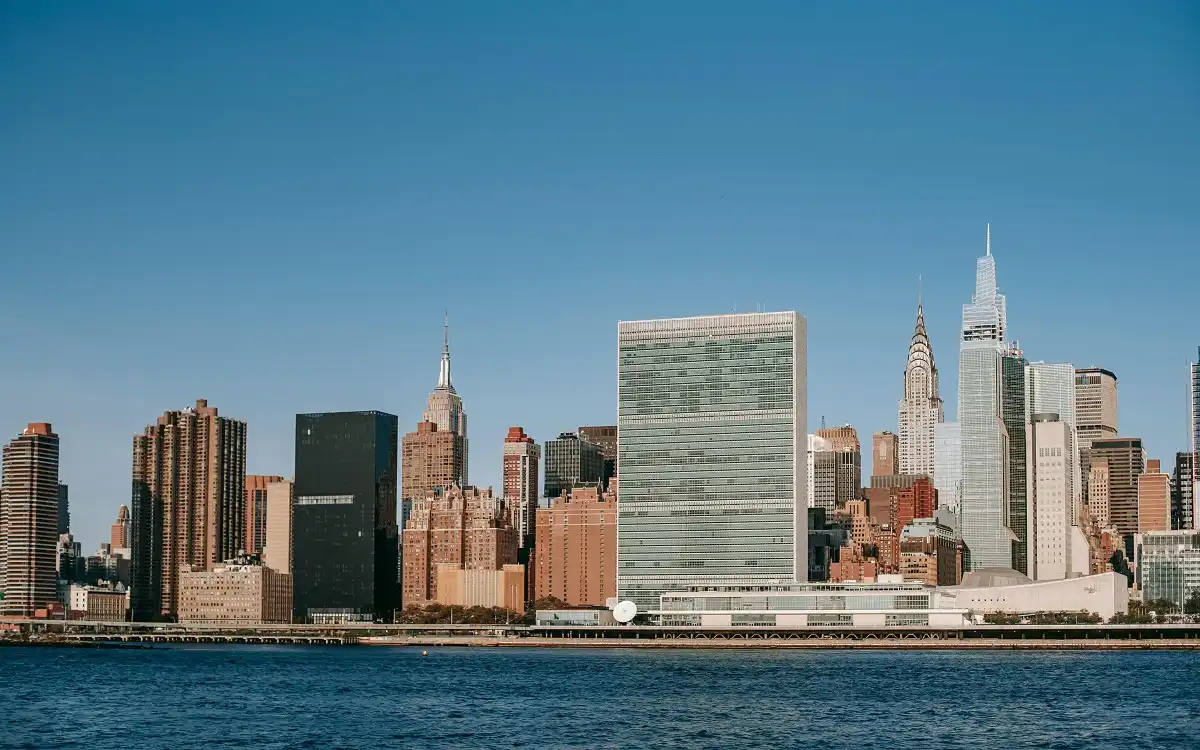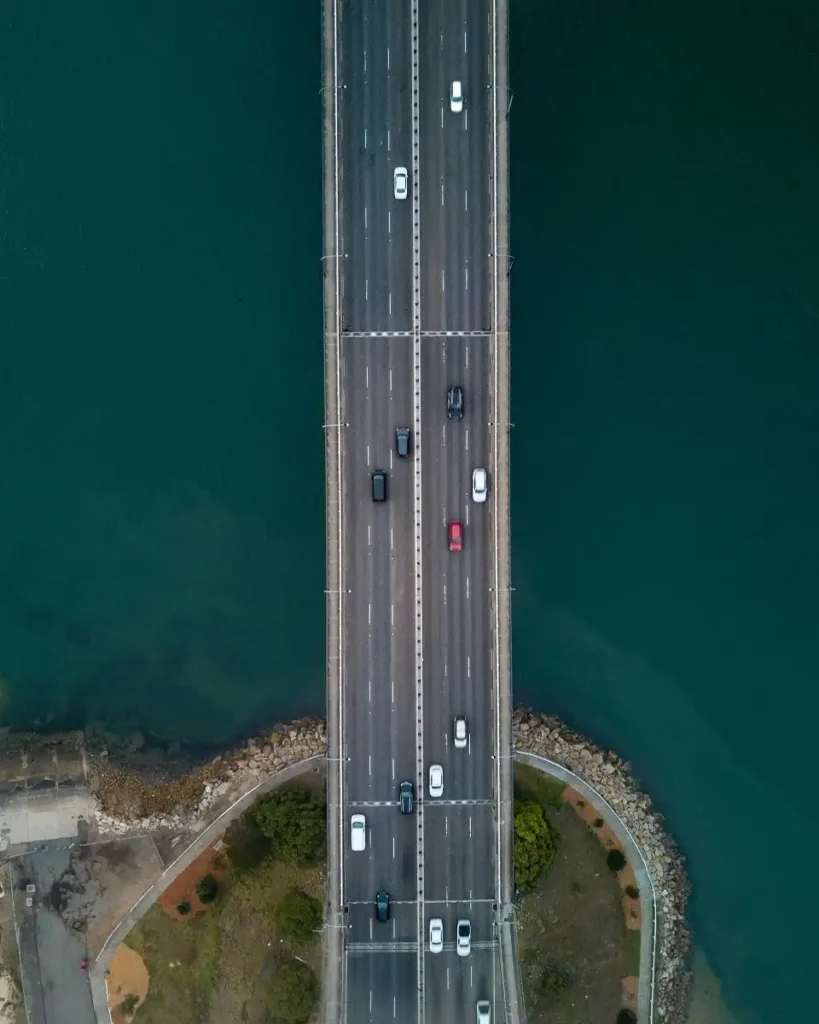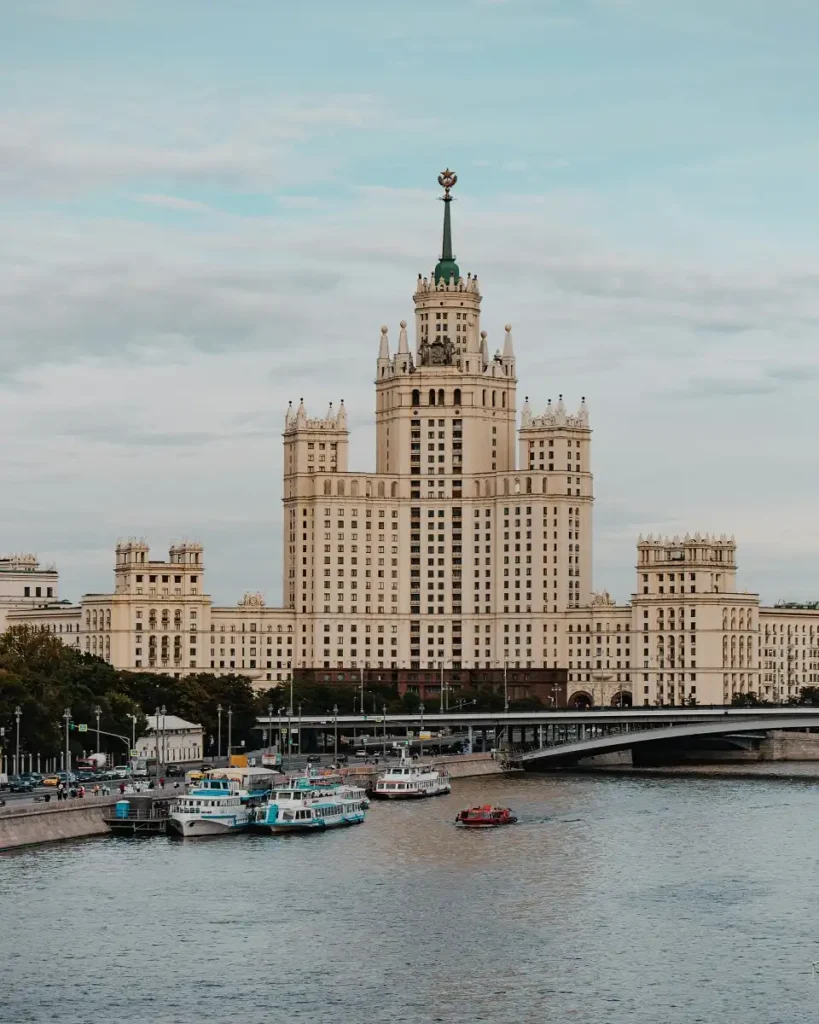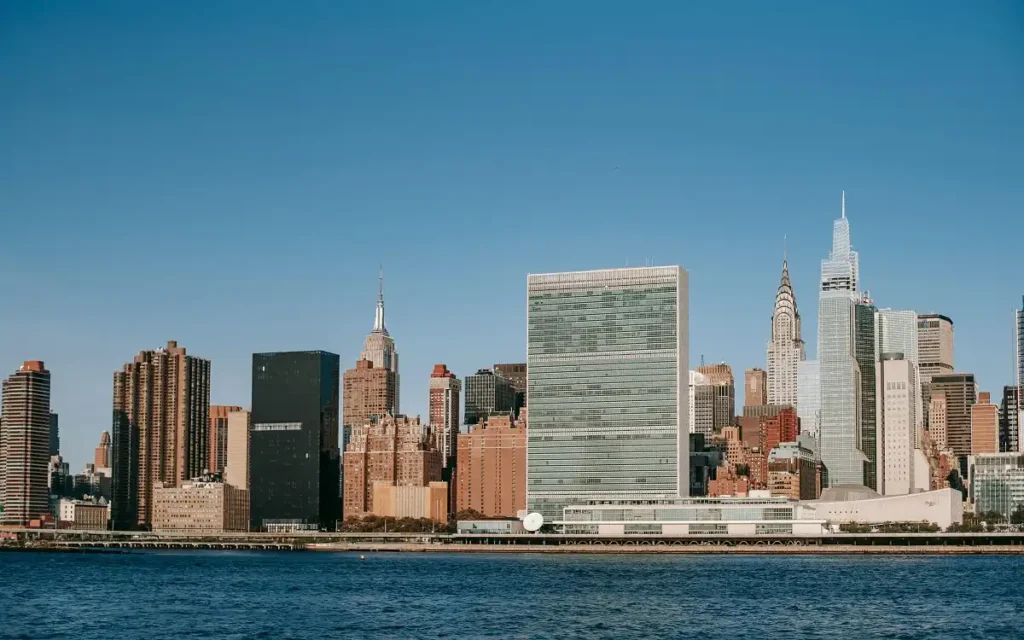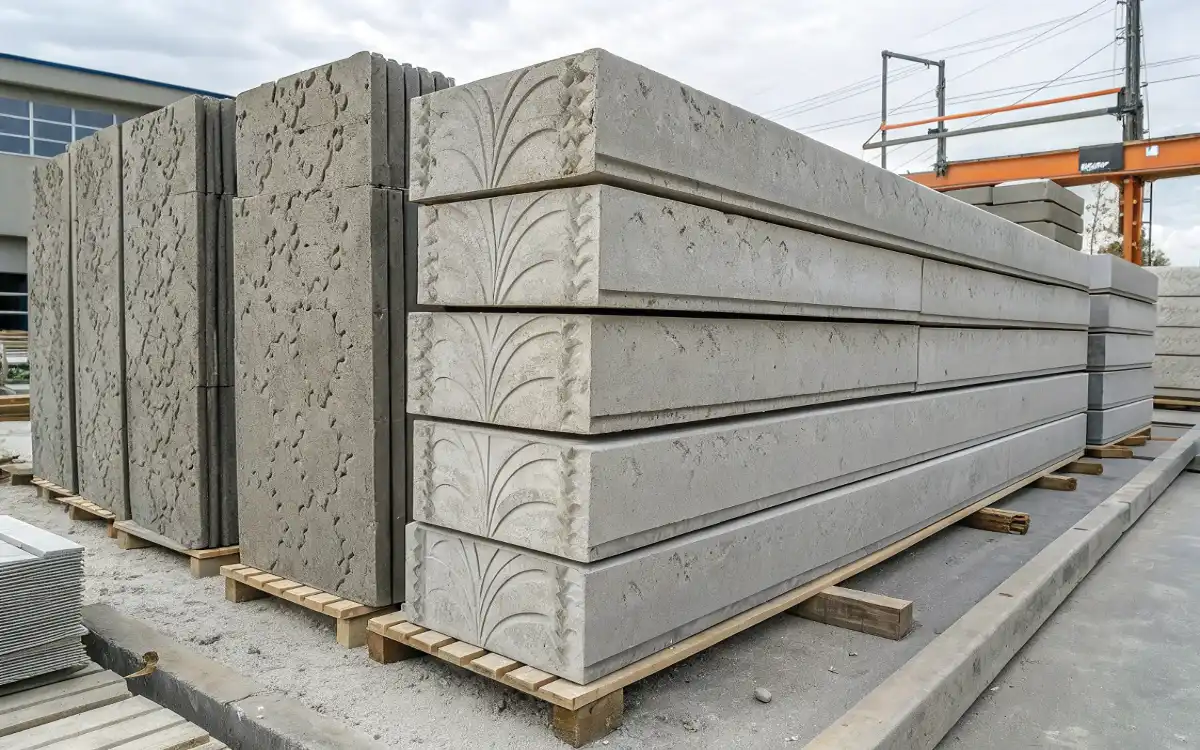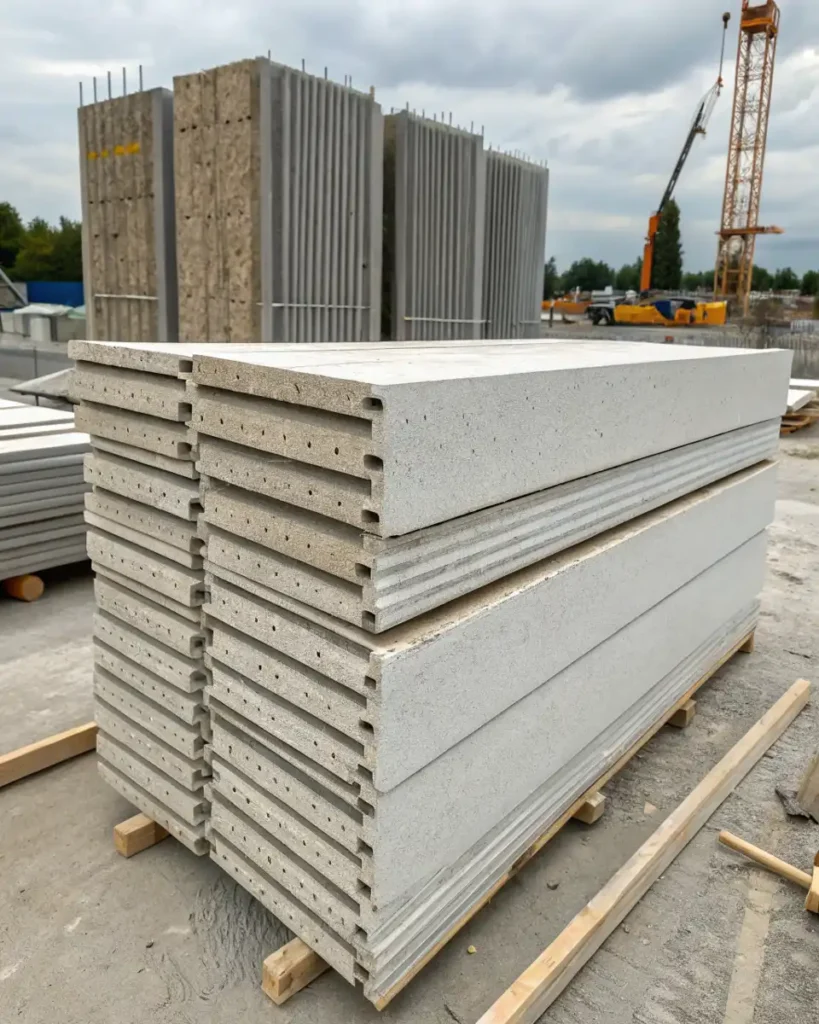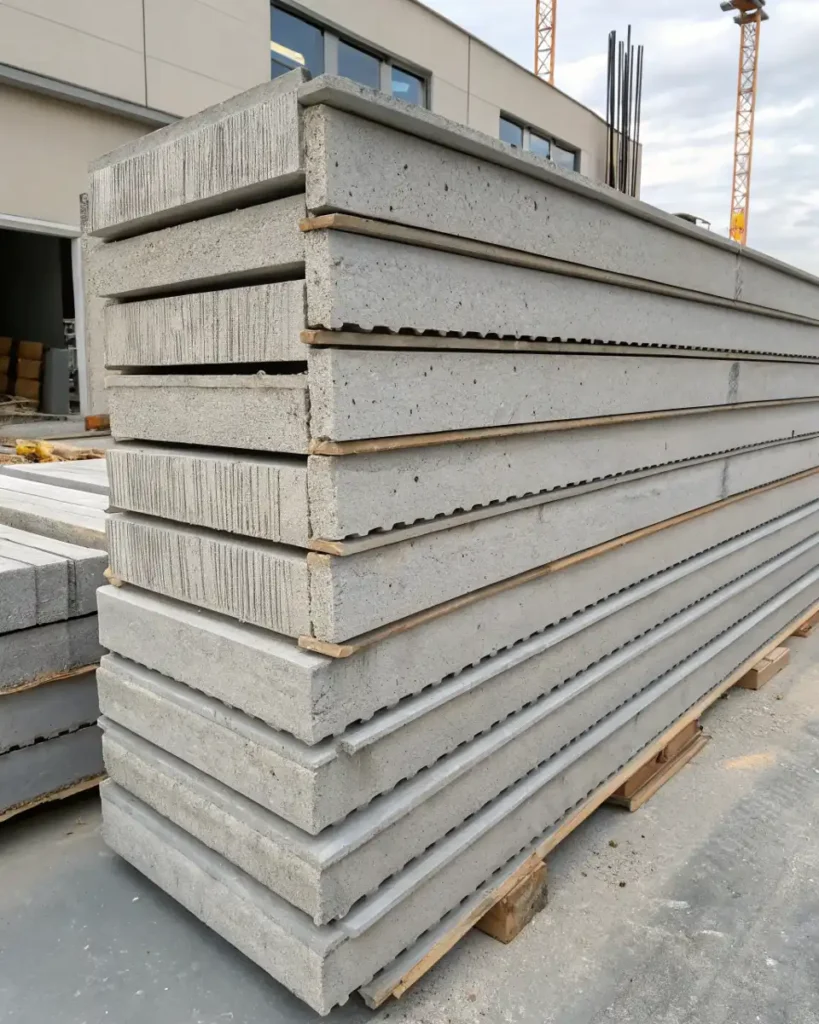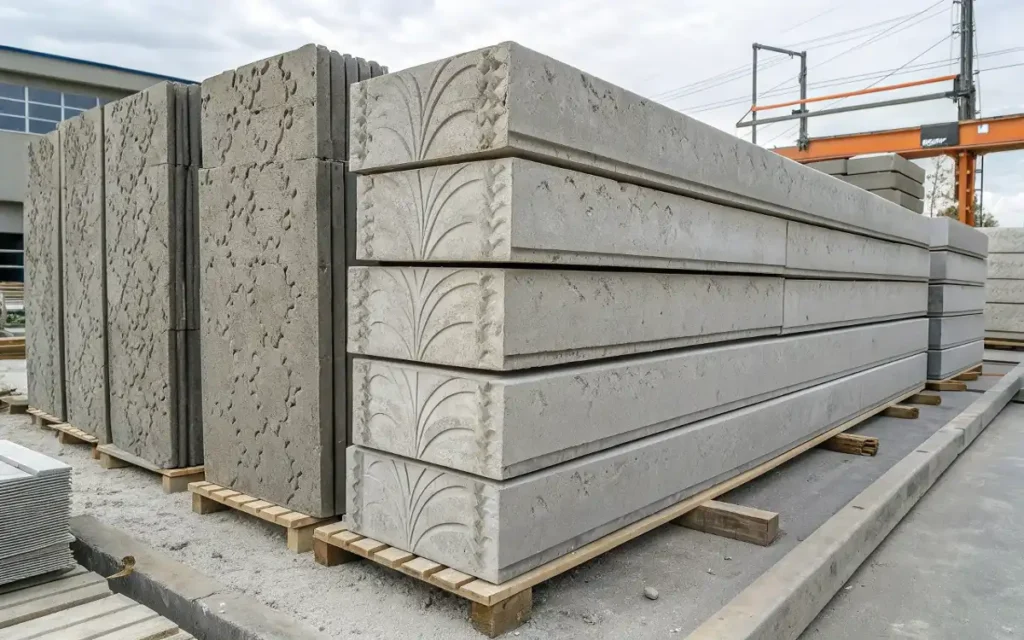Introduction
Given construction’s accelerated advancements, project managers and concrete block wall are acknowledging the need for predictability, timely completion, and safety on construction sites.
The industry’s global practices and the construction industry “precise” practices are changing because of the shift from traditional concrete blocks to energy efficient, factory produced components.
Precast concrete construction and traditional concrete block wall systems on the critical dimensions of wall systems pertaining to speed of installation, strength, quality, cost per linear foot, and recent innovations in materials and processes.
It provides a practical insights, a comparison table for easy reference, and a snapshot of leading edge pre-cast technology and trends for the year 2025.
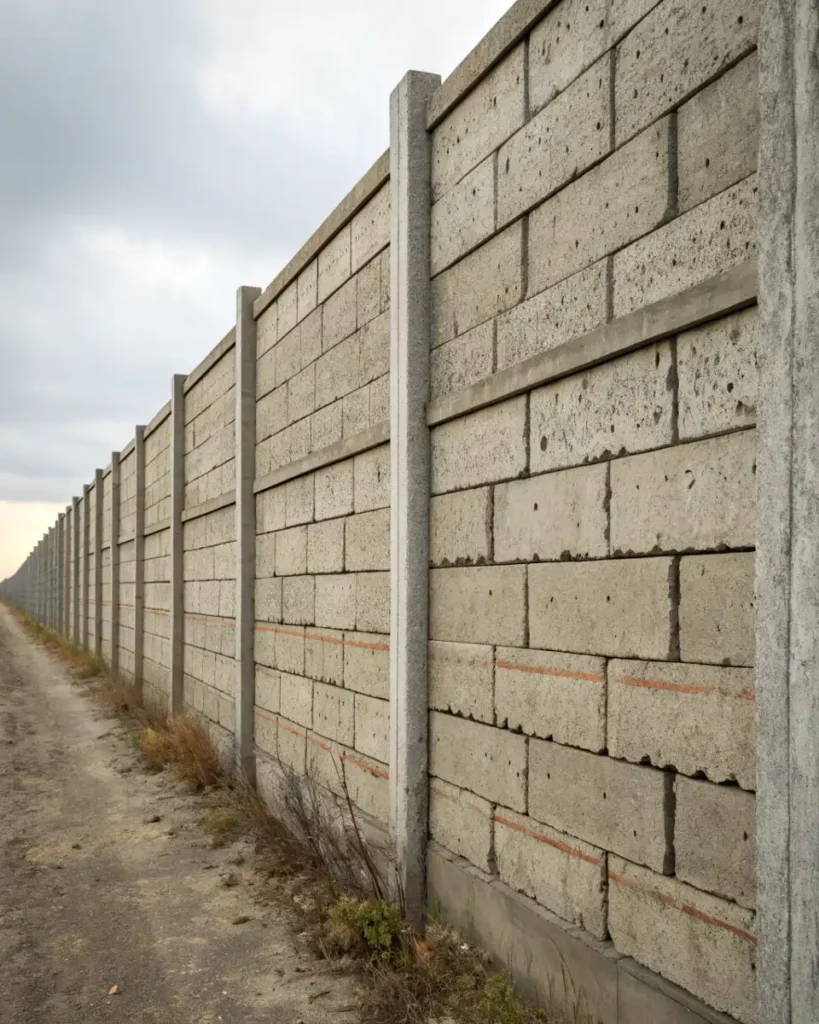
Precast Concrete: 2025 Industry Overview
Projected precast concrete block wall industry growth for 2025, attributed to global investments in infrastructure, urban development, and modular construction, indicates significant expansion.
Particularly within high-rise residential, commercial, and government projects, the use of factory-fabricated walls and slabs has become commonplace.
Looking ahead at 2025, we will progress in several areas:
- Reduced cement carbon footprint by mixing in eco-friendly alternatives
- Incorporating constructed features for beyond code compliance
- Using precision manufacturing digitally for accurate fitting and placement
- Real-time structural health monitoring through IoT-enabled smart sensors
Speed: How Precast Accelerates Construction
Precast Accelerated Construction
Precast components are built off-site in climate controlled factories, meaning they are ready for immediate installation when delivered and drastically interrupt installation schedules.
Instead of working for weeks on laborious masonry, drying phases, concrete forms and battling the elements, you will have a complete wall in place a couple of weeks faster than the traditional block wall assembly.
Usual Benefits:
- As soon as site foundations are ready, concrete block wall can be installed alongside site parallel construction.
- Indoors curing eliminates weather delays on cement and building walls.
- You will not need large masonry crews, extensive formwork, scaffolding, and precast reduces site congestion improving safety.
- You will enclose the work area faster improving construction site efficiency.
Drawbacks of Traditional Concrete Block Walls
The traditional block walls rely on slow processes of sequentially stacking, applying mortar, and manual reinforcement.
Each of the elements: extreme weather, humidity and rain can all contribute to delays of the overall process. The finish must remain uncured until load-bearing use and supervision must be on site constanly.
Skilled masons are essential for any significant advancements in this field.
Precast’s Dominance in Strength and Durability
Precast concrete walls are designed for ultimate strength and for coping with environmental conditions, thereby providing reliable and consistent structural strength for any given location.
Which means:
- Each panel contains high strength concrete block wall and steel reinforcement.
- There are no material inconsistencies and flaws as hand-laid masonry contains unforeseen material defects.
- Concrete is immune to corrosion, acid, and impact.
- Fire and sound protective insulation is constructed within the wall to ward off external disturbances.
- Seismic, wind, and thermal demands are ascribed with precision.
Block wall systems are known to:
- Loosely contain hollow cores which impact mass and load-bearing ability.
- Vary in quality due to manual mixing, poor site conditions, operational control, and unskilled site workers.
- Delay and impact the finishing process with external moisture penetration.
- Masking insulation and finishing is needed to improve sound and fire resilience.
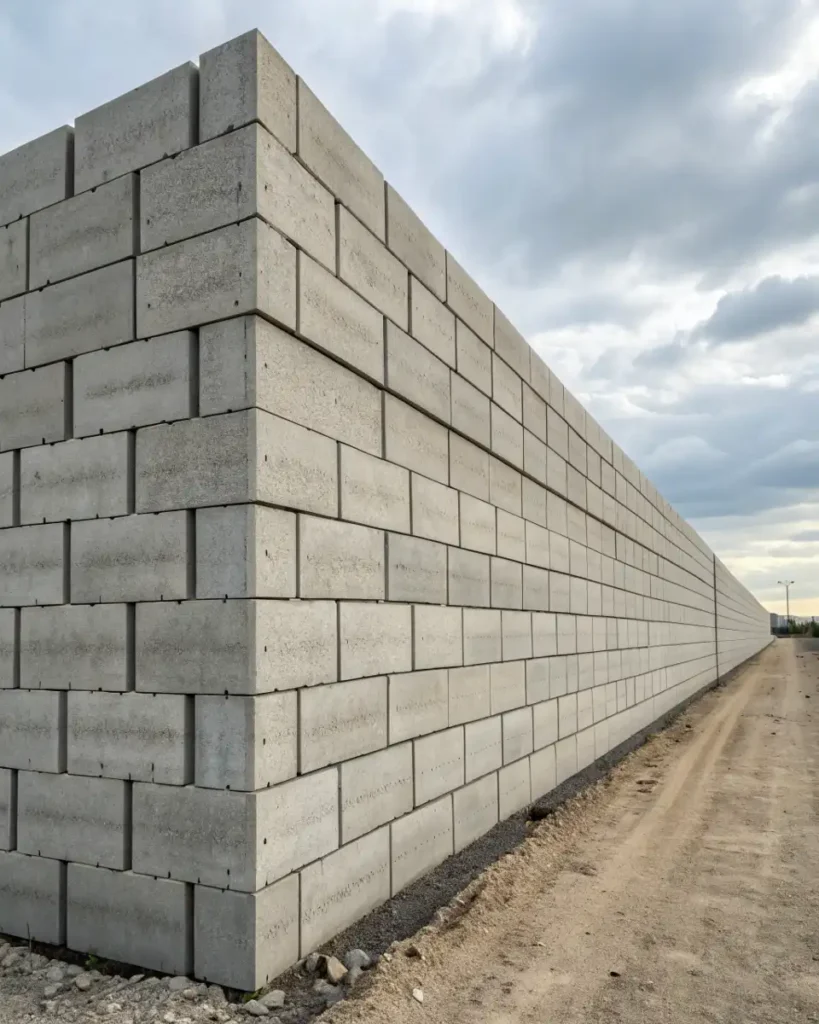
The Rise of As-precast
Precast concrete block wall panels offer limitless design opportunities with diverse finishes and textures to accommodate different architectural styles.
It’s possible to customize to any client design, as well as to easily adapt to company branding. The advancements in 3D printing and surface finishing, targeted for 2025 completion, precast contractor suggest that even new, more complicated, and intricate designs will soon be attainable.
Table: Differences Between Precast Walls and Concrete Block Walls
| Feature | Precast Concrete Wall | Concrete Block Wall |
| Installation Speed | Ready-to-install, rapid assembly | Slow, manual stacking |
| Consistency & Quality | Factory-controlled, high precision | Variable, site-dependent |
| Strength | High tensile reinforcement | Moderate, hollow blocks |
| Durability | Resistant to weather, chemicals, impact | Requires protective coatings |
| Customization | Textures, colors, modular shapes | Limited options |
| Insulation | Superior sound/fire barriers | Needs added insulation |
| Labor Requirement | Minimal crew needed | Large skilled crew |
| Cost Per Linear Foot | Lower long-term cost | Higher labor/material cost |
| Environmental Impact | Sustainable materials/process | Higher carbon footprint |
| Modifiability | Modular, extendable panels | Difficult to modify |
Technology Trends: Smart and Sustainable Precast in 2025
Innovations continue to change both the specification and production processes for precast concrete. Future-building systems focus on Green and smart technologies incorporating enduring adaptability and resilience.
Noteworthy Trends:
- Precise precast panels equipped with smart embedded sensors for monitoring load and weather conditions and notify stakeholders of required maintenance.
- Modular precast systems are engineered to expand or reconfigure cavernous wall layouts for limitless design flexibility without major structural alterations.
- 3-D printed precast functions to streamline building footprints and significantly reduce waste.
- Innovation in production and sustainability is dominated by AI systems for predictive maintenance, integrated system modules, and optimized routed delivery systems.
Long-Term Value
Over the long term, precast concrete walls will offer better value, even if priced slightly higher than traditional concrete block walls. Ease of contraction, maintenance, and waste significantly improve the value of precast approaches.
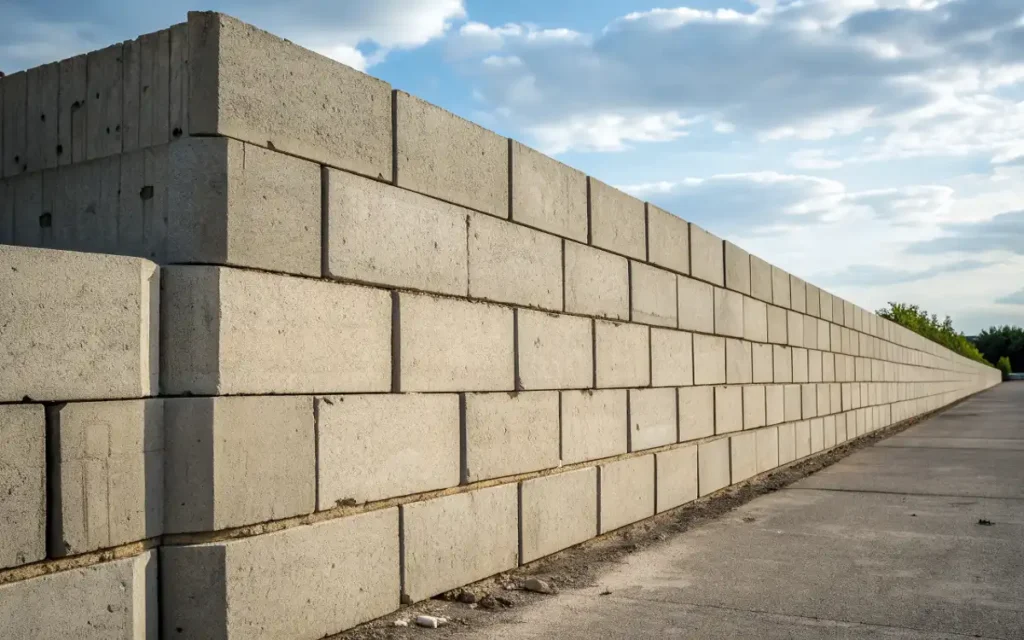
Cost savings are found in:
- Reduced on-site discrepancies and change orders.
- Minimized waste of materials and labor hours.
- Less maintenance, improved durability, and consistency.
- Reduced time of construction, which fast-tracks occupancy or other revenue-generating activities.
Benefits in Environmental and Regulatory Perspectives
In 2025, new environmental regulations are motivating builders to adopt low-carbon and recyclable construction alternatives.
Precast concrete manufacturers are shifting to greener cement mixes and more energy-efficient curing practices, further minimizing the environmental footprint of major initiatives.
Having less site work and less logistical work reduces indirect emissions and lessens urban disruption.
Frequently Asked Questions: Are Precast Walls Always the Best Option?
In many cases, there are benefits to using precast concrete, however in some instances, budget constraints, project size, and unique architectural requirements may lead to using block walls in a non-structural capacity.
Much of this comes down to site conditions, finish requirements, and maintenance, which is easier to plan in the long-term. That said, structures where project speed, strength, and certainty are priorities, precast is the clear option.
Overall Impression
The 2025 construction data and prevailing global trends affirm the choice of precast concrete against traditional concrete block walls. Compared to the latter, the former is far more efficient with time and resources.
The benefits of having smart sensors, modular systems, energy-efficient curtains, and digital design tools in modern precast walls enable the construction industry to improve time delivery and offer a reliable, safe, and sustainable final product.
For Repair and Services
1924 W Edward Ln, Milwaukee, WI 53209, United States
Phone: +14142855933
Email: [email protected]
